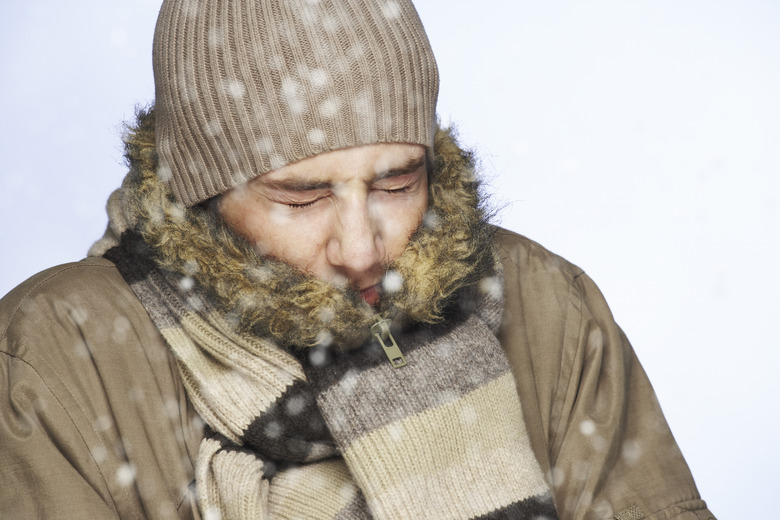Why Can We See Our Breath On A Cold Winter Day?
You probably know that every time you breathe in, you draw oxygen into your lungs, and every time you breathe out, you expel carbon dioxide. Both of these gases are invisible, so the phenomenon of seeing your breath when it's cold outside is a little mysterious. The reason doesn't have much to do with oxygen or carbon dioxide, but with water vapor, which is in both the human body and the surrounding air.
Moist Bodies
Moist Bodies
Water makes up about 70 percent of the human body, which is the same percentage of water found on the Earth's surface. People's lungs are consequently very moist, and every breath that you expel is full of water vapor. You can test this for yourself by holding your hands up to your mouth and breathing into them. When you take your hands away, you'll be able to feel the moisture by rubbing them together. If you like to sleep with the covers over your mouth, you've probably noticed that the covers are damp in the morning.
Condensation
Condensation
The temperature in the body is close to 100 degrees Fahrenheit (37 degrees Celsius), which is warm enough for the water in the lungs to exist as a gas. When the surrounding air is cold, however, the moisture in the air people breathe out begins to turn into tiny droplets of water. This process is called condensation, and it's the same process by which clouds form. The droplets are still light enough to float in the air, but they are large enough to be visible. These droplets form more quickly as the air temperature drops, and the cloud you see as you breathe out becomes bigger.
Condensation Experiments
Condensation Experiments
It's easy to observe the effects of condensation, even on a warm day. All you have to do is breathe heavily onto a window or a mirror. The mist that forms is condensation, and it happens because the surface of the glass is colder than the surrounding air. Another way to observe condensation is to heat water on the stove and make yourself a cup of tea. As the water boils, it forms clouds of vapor that become visible in the colder air above the stove. The cloud continues to form even after you pour the water into your tea cup and put the cup on the table.
Extreme Condensation
Extreme Condensation
There is no specific temperature below which you can see your breath and above which you can't. Condensation can form even on relatively warm days if the air is humid, and it may not form on cold days if the air is dry. When the air is extremely cold, condensation can form so quickly that it creates a problem for people with facial hair: It can form a layer of ice on a beard or mustache. One way people avoid this is by wearing a muffler that covers the mouth. Their breath keeps the muffler warm and prevents ice from forming.
Cite This Article
MLA
Deziel, Chris. "Why Can We See Our Breath On A Cold Winter Day?" sciencing.com, https://www.sciencing.com/can-see-breath-cold-winter-day-5970/. 24 April 2017.
APA
Deziel, Chris. (2017, April 24). Why Can We See Our Breath On A Cold Winter Day?. sciencing.com. Retrieved from https://www.sciencing.com/can-see-breath-cold-winter-day-5970/
Chicago
Deziel, Chris. Why Can We See Our Breath On A Cold Winter Day? last modified March 24, 2022. https://www.sciencing.com/can-see-breath-cold-winter-day-5970/
